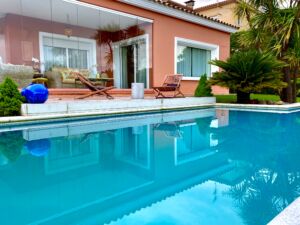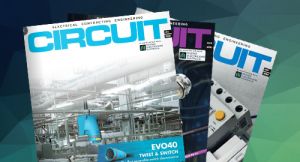Pools and spas: what to know when working around them
By Matthew Kummerow, MEA Field Support Advisor
This article appears in Circuit Magazine, Feb 2021
‘Hey mate, I’ve just had a pool built and I need you to hook up the pool pump and this earth wire that’s hanging out.’
I am sure we have all had these conversations before and they can be difficult.
Pools and spas always present challenges for electrical contractors due to the heightened requirements for equipment selection in the pool zones and the additional requirements around equipotential bonding.
Challenges
Careful planning is required to get the electrical installation right in the area around pools and spas. This seems to be getting more difficult in urban areas with smaller house blocks and pools being installed in very restrictive spaces.
Planning can be easier on new home builds when we are involved from the beginning. However, this is not always the case when pools and spas are installed to existing homes and we are engaged after the pool is built.
I have always found clear and accurate communication with a view to conveying a solution rather than a problem helps greatly when we are struggling to be taken seriously.
Questions
- How do we deal with incorrectly selected pool electrical equipment (often the chlorinator or heat pump will have the incorrect IP Rating if installed in Zone 1) that is already installed, and we are engaged to install socket outlets for their connection?
This is where clear and accurate communication is vital.
- What do we do when it is our reasonable belief that the pool builder has completed the bonding to the reinforcing mesh, and we are engaged to make the final connection to the earthing system of the electrical installation?
- How can we issue Certification for Compliance with the Wiring Rules if we are unsure of the integrity (mechanical and corrosion protection) of the connection to the reinforcing mesh?
- Are pictures showing the integrity of the connection sufficient?
- Would it be unreasonable to request Certification from the installer for this connection?
After all, this connection is electrical work and needs to be completed by a licensed electrician or contractor.
We need a good procedure to ease the challenges
Ask the client or pool or spa builder for plans and equipment specifications
 It is always easier to plan out our installation when we have all the information.
It is always easier to plan out our installation when we have all the information.
1. Classify the Zones
Once the Zones have been determined we can make some informed decisions around location and selection (IP rating) of electrical equipment.
2. Determine Equipotential Bonding requirements
Once these requirements have been determined we can make some informed decisions around equipotential bonding plus location of any conductive materials within arm’s reach of the pool edge that may require bonding.
Keep in mind there are two considerations here. That is, the equipotential bonding requirements of the pool structure and electrical equipment, plus the “arm’s reach zone” for Conductive Fixtures and Fittings as per 5.6.2.6 of the Wiring Rules.
3. Discuss electrical equipment selection and suggest any changes or relocations
If there are any problems – offer solutions.
4. Discuss eliminating any conductive fixtures and fittings within arm’s reach of the pool edge
Some of the most difficult items to deal with in the pool and spa area are conductive materials within arm’s reach of the pool or spa edge. If it is possible to move them or choose alternative materials, it can make our installation a whole lot easier.
5. Discuss installation wiring and equipotential bonding required to be installed prior to construction
Now that we have planned out what is going to be installed, discuss what needs to be done to make this happen. Discuss timeframes. Detail the conduit routes. With all the information, we can communicate clearly and accurately about what is required to achieve the desired outcome.
Pool zones and equipment selection
Wirings Rules – Damp Situations
Section 6.3 (Swimming Pools, Paddling Pools And Spa Pools Or Tubs) sets out the requirements for the “pool zones” and the electrical equipment allowed to be installed in these zones.
The “piece of string” technique:
I had this explained to me once and always found it handy when trying to visualize the zones around pools or spas. It also works extremely well when trying to determine zones that are limited by barriers.
For Swimming Pools – Zone 1:
- Cut a “piece of string” two metres* long.
- Attach one end of the “piece of string” to a “slide that will roll around the edge of the pool” in the horizontal plane ONLY.
- Place the “piece of string” in tension and move the other end of the string in the horizontal plane around the edge of the pool.
- The area mapped out by the “piece of string” determines the limit of Zone 1.
- By “wrapping our piece of string” around the ends of any barrier, we can also determine the limit of Zone 1 when limited by barriers.
*Substitute the required length for the applicable zone:
- 5 metres for Zone 2 of Swimming Pools; or
- 25 metres for Zone 1 of Spa Pools or our “arm’s reach zone”.
Equipotential Bonding
Wiring Rules – Earthing Arrangements and Earthing Conductors
Clause 5.6.2.6 (swimming and spa pools) determines our equipotential bonding requirements.
This is a general run down on pool zones, equipment selection and equipotential bonding, there is obviously a lot more information in the Wiring Rules that may provide more detail for your specific installation.
There are additional requirements that are not in the Wiring Rules
It is important to understand pools and spas electrical installations when installing air-conditioning, solar, relocating the meter position or overhead point of attachment around an existing pool.
Each State service provider, network provider or supply authority (whatever we want to call them) will have rules around this. Clauses 6.3.4.6, 7 & 8 of the Wiring Rules cover some of the requirements, but we need to look further into State based requirements also.
For example – in 6.9.9(b) of the Queensland Electricity Connection Manual (QECM), it is not permitted to access the meter location through a fenced pool area (not just the Pool Zone). If installing solar on an existing property (QCEM 6.4.2 & 6.4.3), we will trigger the requirement for our metering location to be compliant with the current QECM.
This could be a problem if there is an existing pool fenced area at the front of the property which the metering provider has to walk through to access the meter location. In this case it would be required for the metering be relocated to a suitable location as per the QECM. This scenario with trigger the major alteration requirements of 6.4.1 of the QECM – that is, compliance with all the requirements of the QECM.
If you need access to resources or assistance please contact MEA on 1300 889 198.

